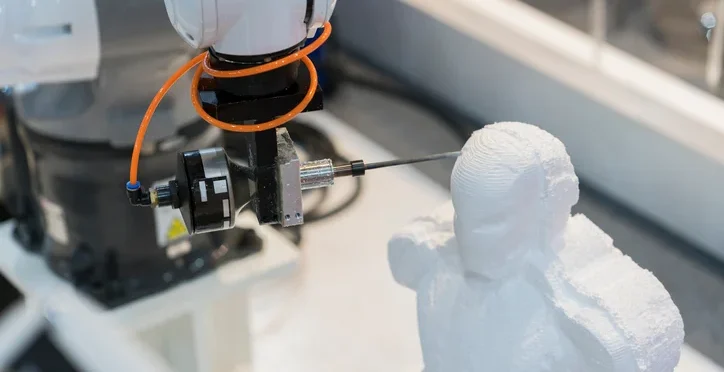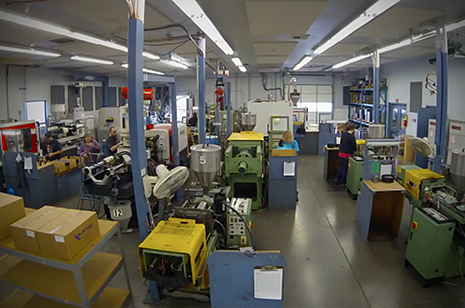- BY nwmcadmin
- POSTED IN American Manufacturing
- WITH 0 COMMENTS
- PERMALINK
- STANDARD POST TYPE

CNC milling is widely used in industrial manufacturing, but its precision and repeatability also make it valuable in the world of fine art. Artists and fabricators increasingly rely on CNC technology to produce large, immersive installations that are both structurally sound and visually striking.
While Rex Plastics specializes in injection molding rather than creating CNC art directly, our team understands the technical demands behind such projects. In many cases, these installations are best handled by a dedicated plastic fabricator, but the principles of design, material selection, and manufacturing precision remain the same.
What is CNC Art?
CNC art refers to artwork created using computer numerical control (CNC) machines. These machines carve, cut, or engrave materials like wood, metal, foam, or plastic with high precision, based on digital designs. CNC allows artists to explore complex forms, patterns, and textures that would be difficult or impossible by hand.
You can read more about CNC milling itself in our more detailed blog on the topic here.
Why Use CNC Milling for Artwork?
This process provides exacting detail and repeatability, both of which are important in large-scale artistic projects. Whether replicating patterns or constructing intricate installations, artists benefit from the machine’s consistency and tight tolerances.
Immersive Art and Large Projects
Immersive art often requires oversized pieces or multi-part installations. CNC ensures components align perfectly, which is vital for both visual harmony and viewer safety. Large sculptures, exhibit walls, and interactive environments all benefit from CNC’s controlled precision.
When parts are intended for high-visibility settings, cosmetic quality is critical. At Rex Plastics, we review cosmetic requirements with customers to ensure highly visible or presentation-grade parts meet expectations for appearance as well as function.
Repeatability
CNC machines can produce identical parts multiple times without variation. For artists creating editions of a piece or needing modular components for touring exhibits, this repeatability is a major advantage. It also makes repairs or replacements easier when working with wear-prone materials.
Other Types of CNC Fine Art Applications
CNC is used in many forms of art beyond sculpture. It’s often involved in:
- Set design
- Public installations
- Architectural features
- Custom furniture
Artists may also use CNC to fabricate frameworks, jigs, or molds that support traditional hand-finishing or casting techniques.
CNC Machine Artwork Examples
Artists and design studios have used CNC milling to create everything from abstract wood wall panels to large-scale public sculptures. The process is also popular in experimental art schools and maker spaces, where creativity meets engineering.
In Finland, an artist named Tomi used a CNC router to carve thousands of perfectly sized circles into painted plywood. The result was halftone-style portraits resembling comic-book art, with each piece composed of 3,000–4,000 dots carved in about an hour.
Sculptor Chris Bathgate built intricate sculptures from over 1,000 machined parts. He combined CNC and manual work—making custom bolts, pins, and spacers—to assemble pieces that stand as engineered art, exploring the intersection of design precision and visual form.
How to Make CNC Art
To create CNC art, artists typically start with a 3D model or digital drawing. This file is converted into toolpaths using CAM software, which directs the CNC machine. Material choice, cutter type, and machine speed all affect the final result. Post-processing may include sanding, painting, or assembly.
You can read more about this process and the intricacies of CNC machining in our blog here.
When balancing structural durability with visual appeal, we often recommend polycarbonate as the material of choice, provided there are no environmental issues like chemical exposure to consider. Its strength and transparency make it suitable for projects that need to be both tough and attractive.
Have a Question? Rex Plastics Can Help!
While Rex Plastics focuses on injection molding rather than producing CNC art directly, our team understands how CNC milling intersects with many industries, including fine arts. We can advise on material selection, design-for-manufacturability, and prototyping to help ensure your project is a success.
Contact us for questions and a quote today!


